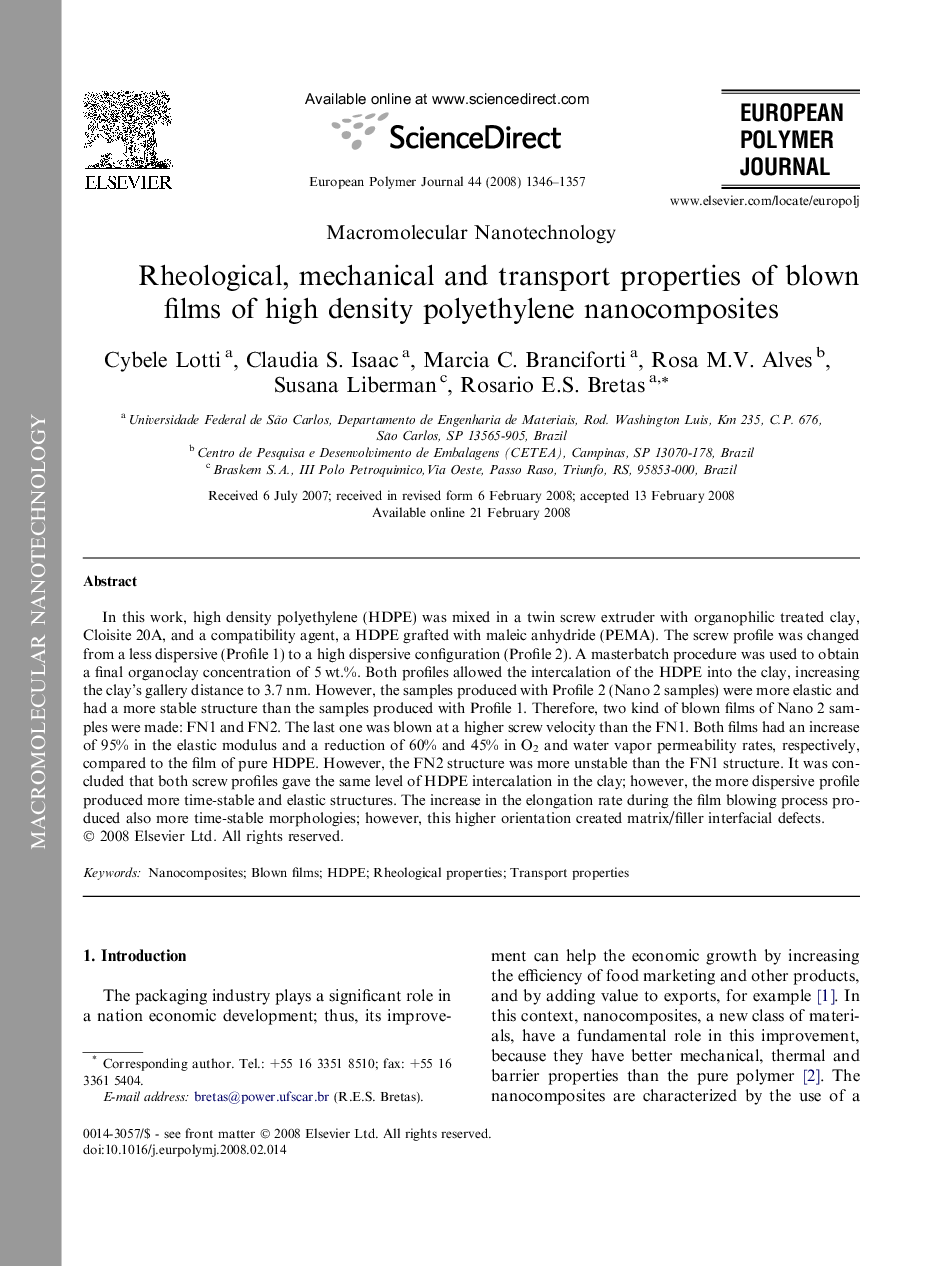| Article ID | Journal | Published Year | Pages | File Type |
|---|---|---|---|---|
| 1403111 | European Polymer Journal | 2008 | 12 Pages |
In this work, high density polyethylene (HDPE) was mixed in a twin screw extruder with organophilic treated clay, Cloisite 20A, and a compatibility agent, a HDPE grafted with maleic anhydride (PEMA). The screw profile was changed from a less dispersive (Profile 1) to a high dispersive configuration (Profile 2). A masterbatch procedure was used to obtain a final organoclay concentration of 5 wt.%. Both profiles allowed the intercalation of the HDPE into the clay, increasing the clay’s gallery distance to 3.7 nm. However, the samples produced with Profile 2 (Nano 2 samples) were more elastic and had a more stable structure than the samples produced with Profile 1. Therefore, two kind of blown films of Nano 2 samples were made: FN1 and FN2. The last one was blown at a higher screw velocity than the FN1. Both films had an increase of 95% in the elastic modulus and a reduction of 60% and 45% in O2 and water vapor permeability rates, respectively, compared to the film of pure HDPE. However, the FN2 structure was more unstable than the FN1 structure. It was concluded that both screw profiles gave the same level of HDPE intercalation in the clay; however, the more dispersive profile produced more time-stable and elastic structures. The increase in the elongation rate during the film blowing process produced also more time-stable morphologies; however, this higher orientation created matrix/filler interfacial defects.
